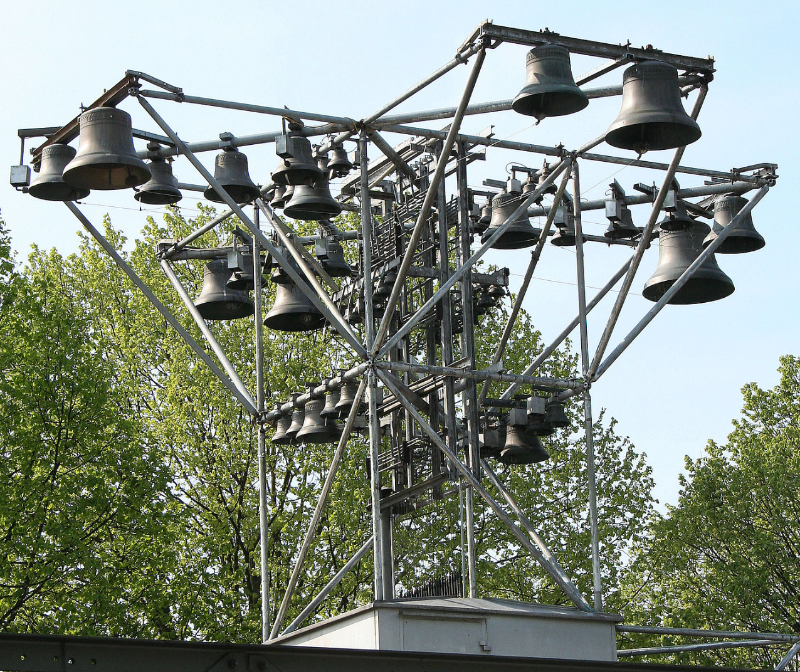Teach This Poem, though developed with a classroom in mind, can be easily adapted for remote learning, hybrid learning models, or in-person classes. Please see our suggestions for how to adapt this lesson for remote or blended learning. We have also noted suggestions when applicable and will continue to add to these suggestions online.

Look closely at the image of carillon bells.
The following activities and questions are designed to help your students use their noticing skills to move through the poem and develop their thinking skills so they understand its meaning with confidence, using what they’ve noticed as evidence for their interpretations. Read more about the framework upon which these activities are based.
-
Warm-up: Look closely at the image of carillon bells. What stands out? Why? How might these bells sound?
-
Before Reading the Poem: Watch a video of a musician playing “Clair de lune” by Claude Debussy on the carillon bells. What do you notice? How do the bells sound? How does this compare to your idea about how the carillon in the image might sound?
-
Reading the Poem: Silently read “The Carillon” by Rosalía de Castro. What do you notice about the poem? Note any words or phrases that stand out to you or any questions you might have.
-
Listening to the Poem: Enlist two volunteers and listen as the poem is read aloud twice, and write down any additional words and phrases that stand out to you. Or, you can listen to an audio recording of the poem.
-
Small Group Discussion: Share what you noticed about the poem with a small group. Based on the details you just shared with your small group and the resources from the beginning of class, how would you describe the speaker? How does the speaker feel about the carillon?
-
Whole Class Discussion: Is this an ode? Why or why not? How do you feel about the last stanza? How does the translated version compare to the Spanish version?
-
Extension for Grades 7-8: The poem opens with “I love them.” What is it that you love or cherish? Write a poem about something meaningful to you, then share your poem with your class.
-
Extension for Grades 9-12: What is the most important theme in this poem? Use the search tool to find more poems that explore similar themes. Write your own poem with your chosen theme, or write an analytical essay that researches how other poets have used it in their work.
“A carillon consists of a series of at least twenty-six tuned bells, played from a keyboard that allows expressiveness through variation in touch. The player, or carillonneur, can play a broad range of music—from arrangements of popular and classical music to original compositions created just for the carillon.” Read more about carillons.
